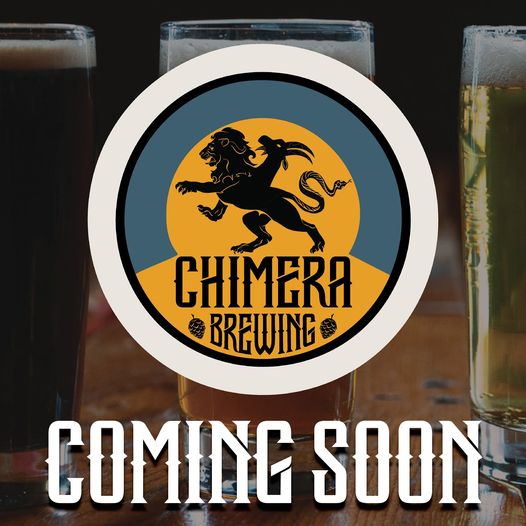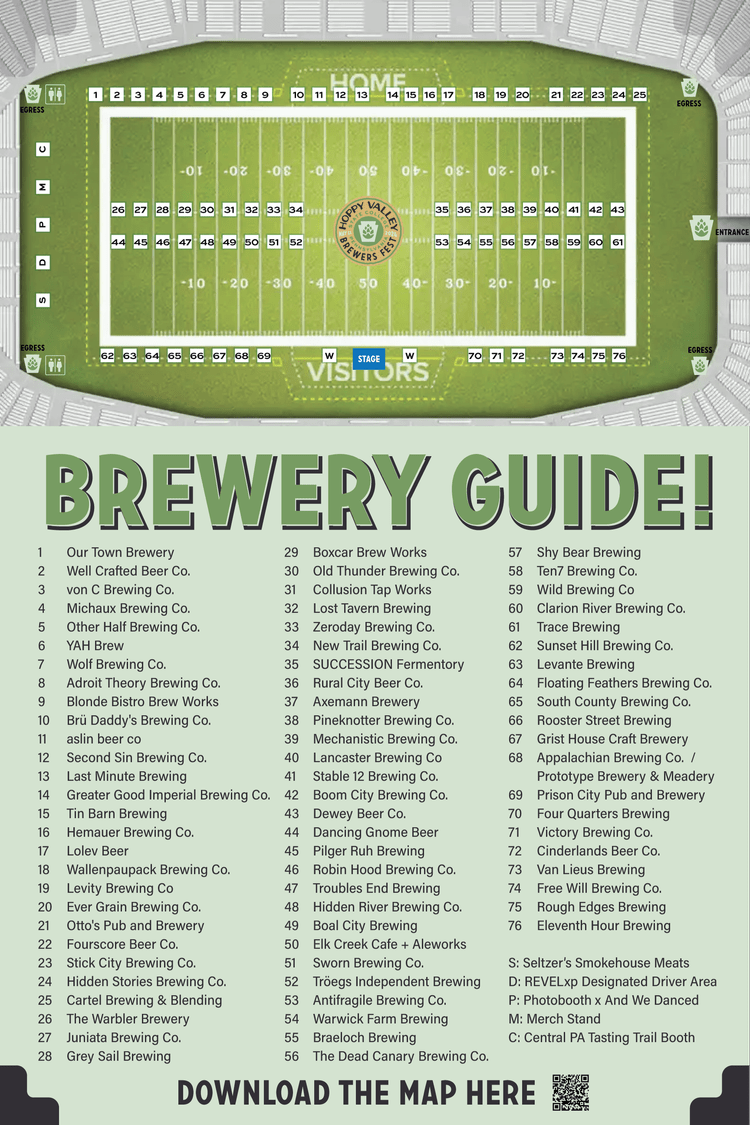Beer Education: Module Nine: Beer Quality and Stability
As always, we start off module nine with a video – a one minute and eight second video – discussing the module; providing an overview for Module Nine – Beer Quality and Stability. Beer quality (obviously) is very important; as is the stability of beer. No one wants a beer that is flat or disgusting after just one week, and especially the day its brewed. So lets get into this and find out what creates a quality beer.
Clicking next, our first page of the module is a text page overview of the module. Beer stability can be divided into six different types:
- Colloidal stability
- Microbiological stability
- Flavor stability
- Foam stability
- Light stability
- Gushing
Up next is a “do-it-yourself” experiment about beer aging. The page walks you through doing the experiment, what ingredients you need, what to do, how to do it, etc. The next page after this is the discussion page for the experiment where you can discuss your results, thoughts, questions, etc.
After this we have a rather long page of definition and types for colloidal stability.
- Clarity – it is an important characteristic for beer, especially lagers; like pilsners.
- Turbidity – (caused by haze) you can observe this when particles are deflected by the light in or through beer. Lower transparency. “This is measured using nephelometers, specialised instruments for measuring the concentration of suspended particulates using light scattering. Turbidity is mostly expressed in EBC-units. For a freshly filtered beer, this value should be close to or lower than 0.8 units although beer color can interfere with the measurement (darker beers have a higher baseline).” (EdX: The Science of Beer Brewing. Module Nine.)
- Colloidal haze – is often formed during conditioning and cold fermentation. It is typically (and hopefully) removed during clarification and filtration.
“The most commonly found beer compounds in haze are proteins/polypeptides (smaller proteins, mostly degradation products) and polyphenols but also polysaccharides, metal ions, hop resins, and melanoidins have been found as constituents of haze.” (EdX: The Science of Beer Brewing. Module Nine.)
There is three types of (bad) haze: chill haze, permanent haze, and starch haze.
Our next page (still under colloidal stability) is all about haze formation. “Haze is the result of (weak) reversible (for chill haze) and irreversible (for permanent haze) interactions between proteins/polypeptides and polyphenols. For chill haze, these reversible interactions can be ionic and hydrophobic interactions or hydrogen bonding. In permanent haze, a covalent attachment between polymerized polyphenols and phenolic residues of amino acids in the polypeptides are the basis for haze formation.” (EdX: The Science of Beer Brewing. Module Nine.) This page is full of diagrams of the various polyphenols and other compounds that make a beer hazy. The figures are both black and white and grey-scaled and show the molecular breakdown.
The following page is a text page titled – Factors influencing haze formation (still under colloidal stability). This page describes the ‘possible’ factors that induce haze in colloidal stability, with the final possibility being the most ‘agreed upon’ by scientists. “…existing polyphenols first need to be activated by oxidation before they can react and develop haze. Due the detrimental role that oxygen plays in colloidal stability, mechanism 2 for the initiation for haze formation is nowadays most plausible and accepted by scientists.” (EdX: The Science of Beer Brewing. Module Nine.)
The rest of the page is a large chart broken into two categories: factors and how / roles. Listing the different factors of haze and how they appear. There is eight factors: light, storage temperature above 4 degrees (C), pasteurization, movement of the beer, pH, oxidation in presence of O2, metal ions (copper, iron, etc.), and carbohydrates.
Following this page, is another lengthy text page – colloidal stabilization. “Given that the primary cause of colloidal beer haze is the formation of protein-polyphenol complexes, several procedures to retard and/or prevent haze formation during beer storage have been developed and implemented.” (EdX: The Science of Beer Brewing. Module Nine.) There are some measures to reduce this. Use of raw materials (malt and hops) low in proline-rich proteins and polyphenols, low protein grain, use of hop extracts, forced formation of protein-polyphenol complexes during mashing and retention of these complexes during mash filtration, mashing in at low pH (5.2), low sparge rates, acidified sparging water, coagulation of haze-sensitive proteins and the formation of protein-polyphenols complexes during wort boiling.
“The most important measure for haze prevention of course is to avoid the presence of small particles in the final beer. These particles are responsible for invisible pseudo-haze but are also nucleation sites for further haze formation. This is why it is important to minimise the load on the filter by proper brewing operation (as highlighted above) and to apply a proper filtration regime (see module 8). Specifically for colloidal stability, it is important to focus on lowest possible temperature, minimum oxygen pick-up and correct filter aid during filtration.” (EdX: The Science of Beer Brewing. Module Nine.)
After this page is a ‘quick knowledge check’. The first question is a drop-and-drag question, the second is a multiple choice (choose as many as apply), and the final question is a true or false.
We now move onto microbiological stability. The first page of this segment is ‘factors influencing microbiological stability’. Some yeasts and bacteria are able to contaminate beer, able to grow in beer, and through this it can destabilize beer. Beer is considered a microbiological stable beverage. The parameters for this stability are:
- ethanol content – up to 10%
- carbon dioxide content – 0.5% w/v
- low pH – 3.8pH – 4.7pH
- iso-alpha acids – 15-100 ppm
- reduced availability of nutrients
- low oxygen content – below 0.1 ppm
Some things to prevent microbiological instability are:
- wort boil / heat treatment in the final container (pasteurization / sterile filtration)
- aggressive sanitation procedures
- no spontaneous fermentation or open fermentation vessels
The next page is ‘spoilage microorganisms’. “All raw materials such as malt, hops, water and adjuncts carry their own specific microorganisms. If these microorganisms can proliferate during one of the brewing steps, they can produce metabolites causing off-flavors. In case these microorganisms survive all the steps in the brewing process (including pasteurisation when applied), they might end up in the final packaged beer as contaminants and potential spoilage microorganisms. The yeast used for fermentation can also be source of contamination since it has been observed that pitching yeast can be contaminated with low levels of bacteria and wild yeasts. Proper yeast handling in the brewery is necessary to avoid any contamination (check out module 7 again for more details on yeast handling in the brewery, including acid washing of cropped yeast). Another important source for contaminations is the brewhouse equipment (vessels, piping) if they are not properly cleaned and maintained. Until the package is closed or sealed, the final steps of the brewing process (after fermentation) can also be prone to contamination from airborne microorganisms or microorganisms on the filling equipment (microbial growth due to high humidity).” (EdX: The Science of Beer Brewing. Module Nine.) Following this introduction paragraph is a figure that lists some of the most common spoilage microorganisms at a brewery or in a beer. Contaminating bacteria in beer are typically lactic acid but occasionally also anaerobic bacteria. After this is a pull-down chart to learn more about the common microorganisms. (Lactic acid bacteria, fungi, wild yeast, etc.)
Our next page is dedicated to cleaning and sanitization. If you talk to any brewer, or home brewer, one of the things they repeat over and over and over and over is – clean, clean, clean, clean, clean. When asked what they do most as brewers, its often they’ll say something like “cleaning” in that sad, half-joking, not really joking kind of way, and they’ll look distant, mumble something and wander off. (Believe me, I’ve seen that look many times!)
A list of potential contaminations in beer:
- remainders of (old) beer
- microbiological contamination (bacteria, fungi, yeast)
- hop remnants
- calciumoxalate in fermentation and lagering tanks (beer stone, beer scale; can be removed using acids)
- lipids-proteins
- mineral deposits in water circuits
NOTE: Remember the difference between CLEANING AGENTS and DISINFECTING AGENTS. Cleaning agents remove product residues or deposits like lipids or proteins. Disinfecting agents kill off most microbiological contaminates.
Clicking next, we come to an expert clip by Professor Charlie Bamforth. It is 10 minutes and 10 seconds long. In Bamforth’s own words: “So, what I like to talk to you about is flavor stability, freshness,which is probably the biggest technological challenge facing the brewer today.” This is a great clip, he is funny, witter, and very intelligent, and speaks about the freshness, and discusses many topics. He does say that cans are greater than bottles. He gives a lot of information, but his biggest thing is keeping beer cold. (Talk to any good beer distributor, or bottle shop worker, like Breski’s Beverage, or The Fridge, etc, and they will all agree with that as well.) Under his clip is a chart of temperatures and shelf life. 10(c) = 9 months (expected shelf life). 20(c) = 100 days / 3 months. 30(c) = 1 month. 40(c) = 10 days. So that gives you some kind of idea about how important keeping beer cold is.
Moving on, our next page is the introduction page for the next segment – flavor stability. “
Flavor stability is one of the most challenging parameters to achieve. The flavor of a beer will always change over time and hence it is perhaps better to speak of flavor instability instead of stability. Sometimes other terms are used to refer to flavor (in-)stability: in literature also beer ageing or staling are used to describe the changes in beer flavor that occur during (long-term) storage. Any change in aroma or taste compared to the fresh beer can be considered as flavor instability. Especially for exported beers, the time till consumption can be very long, increasing the changes for ageing. But why can’t an aged beer be preferred over a young beer, just like is now the case for most wines? Well, you literally got a taste of why this isn’t the case when you performed the Do-It-Yourself experiment at the start of this module! In beers, ageing results in the formation of undesirable (off-)flavors. The formation of these aged-dependent flavors varies from one beer style to another. Lager beers are for example very prone to flavor instability.” (EdX: The Science of Beer Brewing. Module Nine.)
Some results of beer aging:
- decrease of bitterness
- decrease of fruity aromas
- increase in sweet taste
- increase in caramel, ribes (black currant), and toffee like aromas
- increase in cardboard like flavors
This is just a generalization, and certain complexities change differently. Craft breweries in America (and Europe, and elsewhere in the world in recent years) are starting to produce certain beers purposefully for aging, a lot of barrel aged beers already lend themselves to being bottle aged in a cellar.
The next page is a text page about important molecules. This is a rather long page full of chemical and molecule diagrams, as well as a large chart at the end of the page. A very science heavy page with the diagrams and figures and charts. But full of important information, so make sure to read over it. (It also does have an extensive paragraph of information as well.)
Another long page – reactions involved in beer instability, follows this. The page even begins with a warning describing how this is a very long unit and will require sufficient time reading over it all. “Carbonyls and mainly staling aldehydes, such as the key staling component E-2-nonenal, are important flavors that occur during beer ageing. Fresh beer contains rather low levels of these aldehydes (mostly below their flavor thresholds), but their concentrations increase during long-term beer storage. Some of these carbonyl compounds are directly responsible for the observed off-flavors as their concentration increases above the odor threshold (e.g. E-2-nonenal), while other carbonyl compounds might also increase in concentration during ageing but stay below their respective threshold for detection.” (EdX: The Science of Beer Brewing. Module Nine.)
Factors influencing flavor stability:
- oxygen
- transition metals
- temperature
- sulfite
- heat load
- vibrations
After all this, we come up to another ‘quick knowledge check’. (I love the fancy name for ‘quiz’ or ‘test’.) It’s one drop-and-drag question, followed by four checkbox questions (multiple options, select all of the best that apply).
Moving on, we start the next segment of the module – foam stability. The first page of this segment is definition and formation.
Definition – “Foam is an important criterion for beer quality since the consumer will judge a beer also with his/her eyes. Foam is differently evaluated in for example Germany and most European countries in comparison to England/UK: British consumers don’t like a beer head (expect for Guinness); in fact the less head, the better while Germans like a thick layer of foam. The foam potential of a beer is determined both by the raw materials and brewing process and is a complex interaction between different beer constituents. Foam quality is a evaluation of two parameters: foamability (volume) and stability. Another important visual effect from the foam is the adherence to the side of the glass called cling or lacing.” (EdX: The Science of Beer Brewing. Module Nine.)
Foam Formation – “Beer is a colloidal mixture of supersaturated CO2 in the liquid beer matrix. As gas is hydrophobic, it rather sticks together than be fully dissolved in the liquid. These areas with high gas concentrations are bubbles. When beer is opened and poured in a glass, foam is formed as a result of the release of CO2 bubbles due to pressure reduction. CO2 bubbles occur at condensation or nucleation sites (e.g. impurities, cracks in the glass material or small particles). As they rise, they will attract surface-active molecules, with low surface tension but high hydrophobicity (e.g. proteins or iso-alpha acids). As such these molecules will form a layer around the gas bubble and will stabilise the bubble in the liquid beer matrix. The amount of dissolved CO2 determines the amount of foam formation, while the surface-active molecules determine the foam stability. In sparkling water, the dissolved CO2 content is also high but due to the lack of surface-active molecules, bubbles will rise but they will not form foam at the liquid surface as the bubbles will immediately collapse due to the surface tension.” (EdX: The Science of Beer Brewing. Module Nine.)
Foam Stability – “After bubble formation, drainage of beer from the foam by gravity will occur and the bubbles start to shrink and collapse. The rate of drainage can be reduced by creating a small bubble size (gentle pouring to create a creamy head) and the amount of hydrophobic interactions (determined by the amount and type of surface-active molecules). Beer foam will slowly decay due to the collapse of bubbles mainly due to an effect called disproportionation. Disproportionation is the moving of a gas from a small bubble to a larger bubble. This causes the small bubble to collapse and the larger bubble to increase in size. Too large bubbles in the foam are undesirable. These large bubbles also burst more quickly due to an even higher surface tension, causing the surface-active molecules to flow back into the liquid. As a result foam becomes more solidified especially in the upper layer (due to CO2 diffusion to the air at a reasonable rate).” (EdX: The Science of Beer Brewing. Module Nine.)
Clicking next, the following page again comes with the ‘time warning’ letting you know its going to be a long unit. (Seems to be a trend with this module, several pages now have had this warning; lots of charts with pull-down tabs and lots more ‘hidden’ information.) This page is titled ‘molecules positively affecting beer foam’. Some molecules that contribute to beer foam are: CO2, proteins / polypeptides, hop bitter acids, carbohydrates, mailiard reaction products, and metal ions. There is a pull-down chart for you to click on each of these headings and read more. (I recommend doing so because this is typically where the quiz questions come from.)
Next page is the opposite of the last; its ‘molecules negatively affecting beer foam’. There are two big factors – alcohol and lipids. Alcohol: “The presence of ethanol should positively influence foam stability due to the increased viscosity of water by the presence of ethanol. However, experimental evidence points towards an opposite effect: foam stability decreases with increasing ethanol concentration, probably due to an ethanol-induced reduction of the rigidity of the surface-active molecule layer. Higher alcohols are also negative for foam stability: the chain length of the alcohol is direct proportional with the degree of impact on the foam.” (EdX: The Science of Beer Brewing. Module Nine.) Lipids: “Lipids also destabilise beer foam (see figure below) and the negative effect increases with length of the hydrophobic chain. Also detergents have a detrimental effect on beer foam stability. Both components are mostly remainders of inadequately cleaned glasses.” (EdX: The Science of Beer Brewing. Module Nine.) This is followed by a chart. There is a smaller, third factor: Protenaise A. “Proteinase A of yeast is an enzyme that degrades proteins. Therefore it is a negative factor for foam stability as it also degrades hydrophobic proteins and polypeptides that are the major constituents of foam and contributors for foam stability. The amount of proteinase A secreted by the yeast highly depends on the yeast health: stressed yeast (e.g. old yeast or poor yeast handling) will produce more proteinase A. Therefore, high gravity fermentations are more prone to poor foam stability: both the decrease in hydrophobic proteins due to dilution and the stress on yeast during fermentation will negatively affect foam formation and stability.” (EdX: The Science of Beer Brewing. Module Nine.)
Moving onwards, we come to ‘factors in the brewing process affecting foam | foam stability’. These factors are: barley, malting, wort production, hop acid utilization, fermentation and maturation, and pasteurization.
Shocking – after this segment, we have a closing quiz, err – I mean – quick knowledge check. (Just like all the past segments of this module.) This time its three check-box questions (multiple picks, pick all that apply).
The next segment is light stability. And we start off with formation of lightstruck off-flavor. Beer is extremely sensitive to light; which is primarily why bottles are brown-glass rather than the light green-glass you see for Heineken or clear-class like Corona or Landshark. (Also shows why they sometimes get ‘skunked’, and also shows the quality of these beers in general.) This page has chemical diagrams showing how the light affects the beer.
There are measures to minimize light and how it affects beer. Some of them are:
- brown / amber glass bottles
- glass thickness
- a coating or sleeve on the outside of green-glass bottles
- reduced iso-alpha acids
- elimination of riboflavin
Time for the next segment – this one sounds like a doozy – ‘gushing’. As with the other segments, our first page is a definitions and terms (or types) text page.
Gushing – “Gushing is generally defined as uncontrolled, often intense over-foaming of a bottle upon opening, without previous shaking or any other agitation. This over-foaming can cause losses of up to 30% of the beer in a bottle. For breweries, apart from the obvious economic loss, beer gushing also causes reputational damage – nobody wants to be soaked in their favorite beer when opening a bottle! Just have a look at the video below to get an idea about how bad this gushing can sometimes be.” (EdX: The Science of Beer Brewing. Module Nine.)
There are two types of gushing – primary gushing and secondary gushing. Primary gushing is caused by the presence of small fungal surface-active proteins. Secondary gushing is caused by CO2 oversaturation, the presence of suspended particles, and course inner surface bottle texture. There is a small clip of a bottle being opened and gushing up; something I’m sure most of us craft beer fans have encountered before. Most likely due to ‘secondary fermenting’ from a sour. The Black & Blue Tastee I had from The Veil Brewing Co was a ‘gusher’. (I’ve had numerous others over the year, just using this particular one as an example here; primarily because I have done a review on it before.)
Next page is factors affecting primary gushing. The page discusses the fungal causes to primary gushing. The most common fungal cause is Fusarium fungi. The page goes on to discuss detection of gushing potential and reduction of primary gushing.
After this is a text page on secondary gushing. Changing of temperatures, refermenting, continuing fermentation, and outright overheated of bottles / cans / beer can result in a secondary gushing. Too much active sugars usually causes the refermentation and continual fermentation that results in certain fruited beers gushing.
The next page is for verified track learners only. Its tips on improving stability. The next page after this is a materials collection page, telling you what to collect for the do-it-yourself project (experiment) upcoming in Module Ten. After this is the typical ‘overview and checks’ end of the module page. Then we have an assessment page for verified track learners. (These are larger, counted and graded tests for those getting a certificate. Unlike myself, who is not, if you are paying the 99.99$ for the certificate, you can do these tests and other pages.)
The last two pages of the module are a feedback and questions (ending discussion page), and then the ‘end of module nine’ page. Congratulations we have finished another module! If you hit the next button it will take you to the Intro page for Module Ten, and that is where we will pick up next time! Can’t wait to see you then!
Cheers everyone, and I really hope you are all enjoying this ‘beer education’ series. Please let me know!
(PS: Today is my daughter’s birthday; Lily turns 11.)
Also, tomorrow is a double-canning day at Tattered Flag. Look to read about that afterwards! Cheers everyone!
-B. Kline
The Beer Education Series:
** EdX: The Science of Beer Brewing
* Beer Education: Series
* Beer Education: Syllabus
* Beer Education: Introduction
* Beer Education: Module One: The History of Beer Brewing
* Beer Education: Module Two: Barley and Malting
* Beer Education: Module Three: Water
* Beer Education: Module Four: Hops and Spices
* Beer Education: Module Five: Yeast
* Beer Education: Module Six: The Steps of the Brewing Process
* Beer Education: Module Seven: Fermentation and Maturation
* Beer Education: Module Eight: Filtration and Packaging
* Beer Education: Module Nine: Beer Quality and Stability
* Beer Education: Module Ten: Beer Assessment and Tasting
* Beer Education: Series Overview




